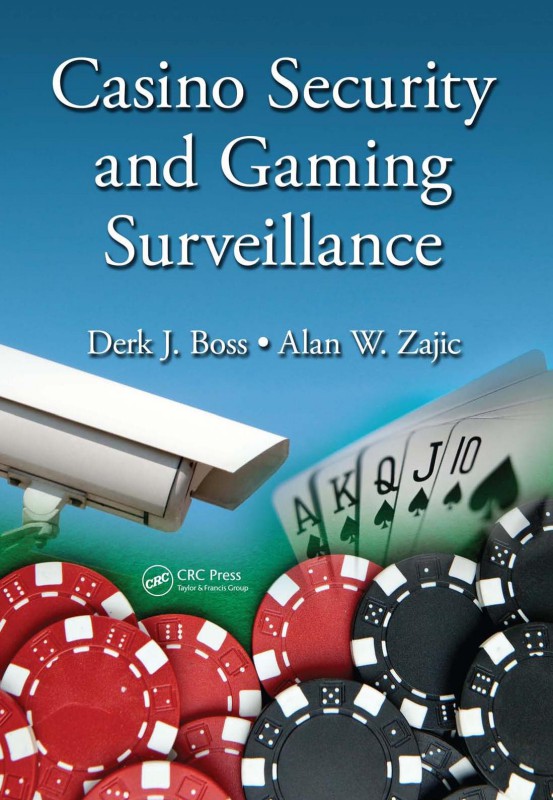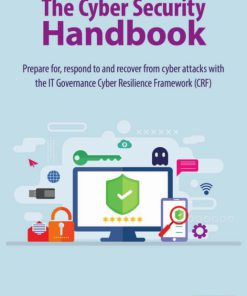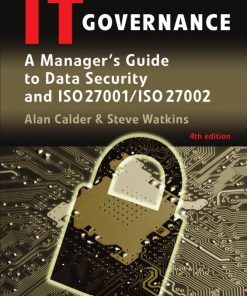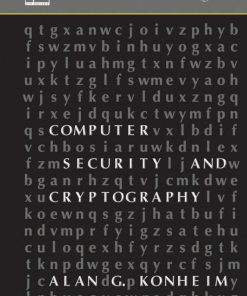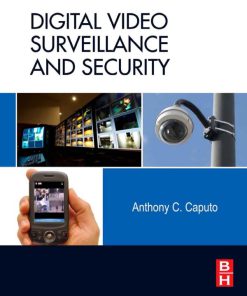Casino Security and Gaming Surveillance 1st edition by Derk Boss, Alan Zajic 104008186X 9781040081860
$50.00 Original price was: $50.00.$25.00Current price is: $25.00.
Authors:Derk J. Boss, Alan W. Zajic , Series:Gaming [161] , Tags:”ISBN-13: 9780387890234″; 2010 , Author sort:Derk J. Boss, Alan W. Zajic , Ids:1420087827 , Languages:Languages:eng , Published:Published:Jul 2010 , Publisher:CRC Press
Casino Security and Gaming Surveillance 1st edition by Derk J. Boss, Alan W. Zajic – Ebook PDF Instant Download/DeliveryISBN: 104008186X, 9781040081860
Full download Casino Security and Gaming Surveillance 1st edition after payment.
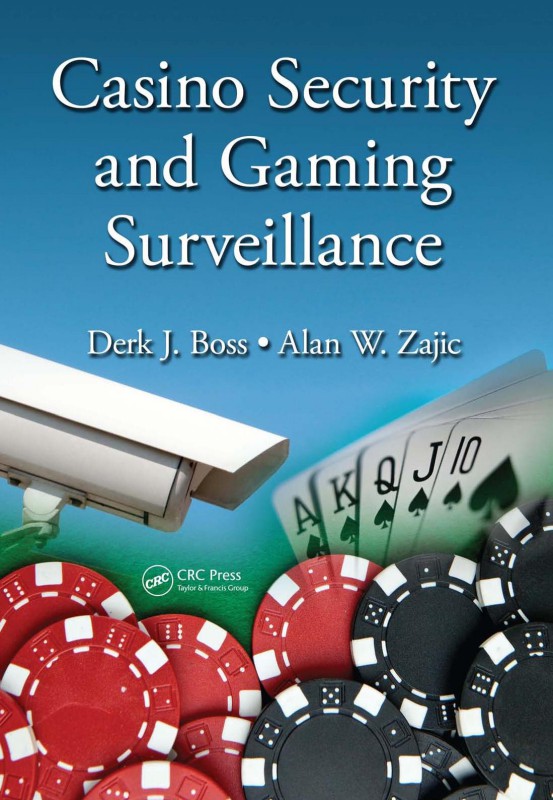
Product details:
ISBN-10 : 104008186X
ISBN-13 : 9781040081860
Author : Derk J. Boss, Alan W. Zajic
Almost all incidences of cheating, theft, fraud, or loss can be detected through the surveillance of critical transactions, audit observations, and reviews of key metrics. Providing proven-techniques for detecting and mitigating the ever-evolving threats to casino security, this book covers the core skills, knowledge, and techniques needed to protect casino assets, guests, and employees. Drawing on the authors six decades of combined experience in the industry, Casino Security and Gaming Surveillance identifies the most common threats to casino security and provides specific solutions for addressing these threats. From physical security and security management to table and gaming surveillance, it details numerous best practice techniques, strategies, and tactics, in addition to the metrics required to effectively monitor operations.
Casino Security and Gaming Surveillance 1st Table of contents:
Section I Surveillance in Gaming Operations
1 Camera Operational Techniques
1.1 Surveillance Patrol
1.2 IOU Patrol
1.2.1 Case History
1.3 Tri-Shot Coverage
1.3.1 Case History
1.3.2 Case History
1.4 Surveillance Audits
1.4.1 Case History
1.5 Surveillance Close Watches
1.5.1 Tips for Successful Close Watches
1.6 Proactive or Reactive?
1.7 Covert Cameras
1.7.1 Case History
2 Game Protection
2.1 Surveillance Skills
2.1.1 Best Practice #1
2.1.2 Best Practice #2
2.1.3 Best Practice #3
2.1.4 Computer Technology
2.1.5 Case History
2.2 Game Protection
2.3 Tells
2.3.1 Case History
2.3.2 Summation
2.3.3 Case History
2.4 Basic Strategy
2.5 Card Counting
2.6 Money Management
2.7 Critical Index
2.8 Evaluating Players
2.8.1 Case History
2.8.2 Threat Level
2.9 Suspicious Activity, Advantage Play, and Cheating at Gaming
2.9.1 Putting It All Together
2.9.2 Case History
Reference
3 Internal Theft and Fraud
3.1 What Is Internal Theft and Fraud?
3.2 Why Is Internal Theft and Fraud So Costly?
3.3 Why Do Employees Steal?
3.3.1 Case History
3.4 Detecting Internal Theft and Fraud
3.4.1 Identifying Critical Areas and Key Transactions
3.4.2 Exception Reports
3.4.3 Statistical Information
3.5 Loss Prevention Programs
3.5.1 Prescreening Techniques
3.5.2 Basic Prescreening Program Components
3.6 Threat and Risk Assessment
3.6.1 Identify Your Vulnerabilities, Risks, and Threats
3.6.2 Case History
3.6.3 Threat Analysis for Surveillance Directors
3.6.4 Protection Plan and Strategies
3.6.5 Apply Countermeasures
3.6.6 Monitor and Investigate Exceptions
3.6.7 Obtaining Buy-In from Top Management and Program Partners
3.6.8 Determine Program Objectives
3.6.9 Case History
3.6.10 Train Program Participants to Operate Program
3.6.11 Perform Daily Analytics
3.6.12 Implement Program
3.6.13 Monitor Program
3.6.14 Evaluate Program Results
3.7 Key Departments to Monitor for Internal Theft and Fraud
3.7.1 Case History: Theft in Players’ Clubs
3.7.1.1 Computer Access Security
3.7.1.2 Computer Security Controls: Breached
3.7.1.3 Exception Reports: Ignored
3.7.1.4 Players’ Club Protection: Failed
3.8 Protection Strategies and Best Practices for Promotions
3.8.1 Best Practice #1: Review Marketing Programs and Promotions
3.8.2 Best Practice #2: Monitor Marketing Programs and Promotions
3.8.3 Best Practice #3: Review Exception Reports
3.8.4 Best Practice #4: Train Your Personnel to Recognize and Report Suspicious Activity
3.8.5 Conclusion
3.9 Loss Prevention at the Point of Sale
3.9.1 Important First Steps
3.9.2 Deterring and Detecting Employee Theft and Fraud
3.10 Summary
4 Security Surveillance
4.1 The Evolution of Security Surveillance
4.2 Tips for Successful Security Surveillance Operation
4.2.1 Case History
5 Standard Operating Procedures
5.1 Surveillance Department Operational Policies and Procedures
5.1.1 Standard Operating Procedures
5.2 Key Surveillance Policies and Procedures
5.3 Key Surveillance Functions
5.3.1 Audits
5.3.2 Officer Training
5.3.3 Summary
5.4 Appendix
5.4.1 Mission Statement
5.4.2 Key Objectives
5.4.3 Investigator Code of Ethics
5.4.4 Function of Surveillance Department
5.4.5 Authority Specific to Surveillance
5.4.6 Surveillance Chain of Command
5.4.7 Surveillance Monitor Room Access
5.4.8 Surveillance Daily Operations
5.4.9 Surveillance Tri-Shot Coverage
5.4.10 Evaluation and Coverage of High Action Games
5.4.11 Advantage Play
5.4.12 Response to Criminal Activity
5.4.13 Reporting Violations of Policy or Procedure
5.4.14 Close Watch and Audit Operations
5.4.15 Required Incident Reports
5.4.16 Writing Incident Reports
References
6 Investigations
6.1 Fundamental Investigative Techniques
6.1.1 Case History
6.2 Interviewing Suspects and Witnesses
6.3 Evidence Gathering and Handling
7 Surveillance Training and Education
7.1 Surveillance Training and Education Program
7.2 Program Setup
7.2.1 Trainee to Level I/Investigator I
7.2.2 Level II/Investigator II
7.2.3 Level III/Investigator III
7.2.3.1 Compensation and Rewards
7.2.3.2 Program Benefits
8 Statistical Information and Analysis
8.1 Table Games
8.1.1 Case History
8.2 Slots
8.2.1 Case History
8.3 Key Daily Reports
8.4 Key Business Indicators (KBIs)
9 Surveillance in the Future
Section II Physical Security in Gaming Operations
10 The Gaming Security Officer’s Role
10.1 Operational Separation from Surveillance and Reasons
10.2 Proactive Presence
10.3 Public Relations and Security
10.4 Uniforms and Appearance
11 Security Patrols and Assignments in the Gaming Environment
11.1 The Function of Patrols and Assignments
11.2 Identification Checks as a Constant
11.3 Stationary Assignments
11.4 Dispatchers
11.5 Lost and Found
11.6 Ingress and Egress Positions
11.7 Employee Entrances and Loading Docks
11.8 Patrol of Hotel and Guest Rooms
11.9 Patrolling the Casino Floor
11.10 Securing Parking Lots and Garages
11.11 Plain-Clothes Security
11.12 Target Area Security
12 Alcohol and the Gaming Environment
12.1 Responsible Alcohol Service
12.2 Managing Intoxication
12.3 Nightclubs, Ultra Lounges, and Large Bars
12.3.1 Nightclub Staffing Levels
12.3.2 Club Drugs and Room Checks
12.3.3 Use of Local Promoters
13 Table Game Fills, Credits, Drops, and Money
13.1 Protection of Currency and Negotiable Chips
13.2 Fills and Credits: Understanding the Flow of Chips
13.3 Escorting Employees with Cash Drawers
13.4 The Slot Machine Drop
13.5 Table Games and Validator Box Drops
14 Managing and Controlling Incidents
14.1 Calls for Service: Responding to Incidents
14.2 Intoxication and Incident Control
14.3 Closed-Circuit Television and Documenting Incidents
14.4 Verbal and Physical Altercations
14.5 Public Domestic Fights
15 Removing Undesirables
15.1 Eject, Evict, Trespass, and Eighty-Sixing
15.2 Underaged People
15.3 The Function of Eighty-Sixing
15.4 The Formal Eighty-Sixing Process
15.5 Converting Incidents into Trespass Warnings
15.6 “Three Fingers”
15.7 Escorts to the Nearest Door
15.8 Making the Decision to Effect a Citizen’s Arrest
15.9 Prosecuting the Trespasser
15.10 Employee Misconduct
15.11 Incidents in Hotel Areas
15.12 Conducting the Guest Welfare Check
15.13 Domestic Hotel Incidents and Evicting a Guest
16 Arrests and Detainments
16.1 An Arrest as a Last Resort
16.2 Restroom Use
16.3 Notifying Local Law Enforcement
16.4 Checking Restraints
16.5 Dealing with Medical Issues
16.6 Conducting Searches
17 Theft, Larceny, and Other Property Crimes
17.1 Theft and Fraud: The Security Response
17.2 Valet Parking
17.3 Theft from Guest Rooms
17.4 Inventory Theft by Employees
17.5 Bartenders and Servers
17.6 Food Cashiers and Servers
17.7 The Friends and Family Discount
17.8 Maintenance Staff and Engineers
18 The Major Security Incident
18.1 Guns and Gaming
18.2 Casino Robbery
18.3 Active Shooter
19 Training Gaming Security Officers
19.1 Training as a Constant
19.2 New Hire Orientation
19.3 Training of the New Security Officer
19.4 Field Training
19.5 Specialized Training
19.6 Refresher Training
20 Common Casino Scams and Crimes
20.1 Where There Are People with Money, Scams Are Present
20.2 The Short Change Artist
20.3 Check Cashing and the Cashier’s Cage
20.4 Distraction Crimes
20.5 Abusing Marketing Programs
20.6 The Slip-and-Fall Artist
20.7 Prostitution and Related Crimes
21 Managing Casino Security
21.1 The Security Industry in General and Gaming Security
21.2 Know Your Facility
21.3 Monitoring Police Calls to Your Facility
21.4 Communicating with Local Law Enforcement
21.5 Professional Groups and Associations
21.6 Tracking, Analyzing, and Managing Incidents
21.7 Internal Staff Communication
21.8 Policies and Procedures
21.9 Written Reports
21.10 Standards and Guidelines
People also search for Casino Security and Gaming Surveillance 1st:
casino surveillance salary
casino surveillance job description
casino security system
casino surveillance systems
casino surveillance cameras
You may also like…
eBook PDF
eBook PDF
eBook PDF
Simulation and Gaming for Mathematical Education 1st edition by Angela Piu 1605669318 9781605669311
eBook PDF
Computer Security and Cryptography 1st Edition by Alan Konheim ISBN 0471947830 9780471947837

